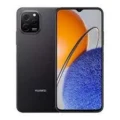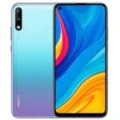Huawei Enjoy 60
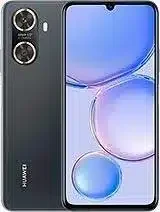


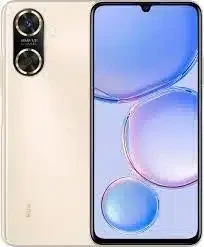
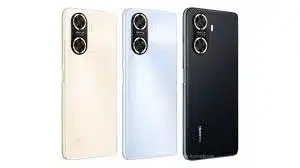
- :
- : 6.75" 720x1600 pixels
- : 6000mAh Li-Po
- : 48MP 1080p
Dive into innovation with the Huawei Enjoy 60 – a fusion of technology and elegance reshaping smartphone experiences. It surpasses expectations, embodying sophistication in every aspect.
At its core, the Huawei Enjoy 60 seamlessly merges cutting-edge technology with sleek design, setting new standards. Crafted with precision, it stands as a beacon of sophistication, redefining aesthetic excellence in smartphones.
The elegant design achieves a perfect balance between style and functionality, utilizing premium materials to capture attention and elevate the device into a true masterpiece.
Highlighting its prowess is the AI-enhanced camera system, revolutionizing photography. Capture creativity effortlessly, transforming everyday moments into captivating visual masterpieces, from sweeping landscapes to intricate close-ups.
Performance is paramount, and the Huawei Enjoy 60 delivers with top-tier specifications, ensuring seamless multitasking, swift app launches, and a lag-free user interface. It’s a reliable companion that never compromises on excellence.
Beyond aesthetics and performance, the Enjoy 60 strikes a perfect balance between form and functionality. The user-friendly interface and intuitive features adapt to diverse requirements, seamlessly integrating into your lifestyle with both style and substance.
Stay updated with timely features by exploring the official Huawei website or reputable smartphone news sources. Huawei’s commitment to regular updates ensures users can maximize their device’s potential and stay informed.
Innovate your mobile lifestyle with the Huawei Enjoy 60 – a testament to pushing technological boundaries while embracing sophistication. It’s more than just a device; it’s an immersive experience, marrying innovation with timeless elegance in the dynamic world of smartphones.
Want to Learn More?
Furthermore Visit the official website of Huaweifor detailed information about the Huawei Enjoy 60: Huawei Official Website
Still Unsure?
If you’re still unsure about your choice, explore other options from Huawei at your nearest store: Huawei Store
Specs
Network
| 2G Network GSM 850 / 900 / 1800 / 1900 - SIM 1 & SIM 2 (dual-SIM) CDMA 800 / 1900 |
GSM 850 / 900 / 1800 / 1900 - SIM 1 & SIM 2 3G bands 4G bands Speed |
| 3G Network |
HSDPA 850 / 900 / 2100 |
| 4G Network | 1, 3, 5, 8, 34, 38, 39, 40, 41 |
| Speed | HSPA, LTE |
LAUNCH
| Announced | March, 2025 |
| Status | Available. Released 2023, March 26 |
BODY
| Dimensions | 168.3 x 77.7 x 9 mm (6.63 x 3.06 x 0.35 in) |
| Weight | 199 g (7.02 oz) |
| SIMs SIM (Subscriber Identity Module) is a small card that contains mobile network subscriber's account information. This allows the phone using the card to attach to a mobile network. The SIM card is most commonly associated with GSM and UMTS mobile networks. Moving a SIM card from one phone to another allows a subscriber to switch mobile phones without having to contact their mobile network carrier. SIM cards can also be used by a phone to store limited amounts of data, such as phone numbers and text messages. | Dual SIM (Nano-SIM, dual stand-by) |
Display
| Display Type Display Technology => A number of display technologies and types used in mobile phones => TFT (Thin Film Transistor), IPS (In-Place Switching), OLED (Organic Light Emitting Diode), AMOLED (Active-Matrix Organic Light-Emitting Diode), Super AMOLED (an even advanced version of AMOLED), Resistive Touchscreen (Resistive touchscreens contain two layer of conductive material with a very small gap between them which acts as a resistance), Capacitive Touchsceen (Capacitive touchscreen technology consists of a layer of glass coated with a transparent conductor) | TFT LCD Size |
| Size | 6.75 inches, 110.0 cm2 (~84.1% screen-to-body ratio) |
| Resolution | 720 x 1600 pixels, 20:9 ratio (~260 ppi density) |
PLATFORM
| Operating System OS => Every computer system run on a base software called Operating System (OS). Operating System controls all basic operations of the computer (such as smartphone, PDAs, tablet computers and other handheld devices). The Operating System allows the user to install and run third party applications (apps), apps are used to add new functionality to the device. | HarmonyOS 3.0 |
MEMORY
| Card Slot Memory Card Slot is a special slot for inserting a memory card. Memory cards allow you to expand the phone's built-in memory, A memory card (sometimes called a flash memory card or a storage card) is a small storage medium used to store data such as text, pictures, audio, and video, for use on small, portable or remote computing devices such as mobile phones, mp3 players, digital cameras. | microSDXC |
| Internal | 128GB, 256GB |
MAIN CAMERA
| Cameras Specs Today’s smartphones come equipped with a very comprehensive set of camera related specifications. Our smartphone, for many of us, has become our primary camera due to it being the one we always have with us. |
48 MP, f/1.8, (wide), 1/2.0", AF 2 MP, f/2.4, (depth) |
| Video | 1080p@30fps |
| Camera Features | Dual-LED dual-tone flash, HDR, panorama |
SELFIE CAMERA
| Cameras Specs Today’s smartphones come equipped with a very comprehensive set of camera related specifications. Our smartphone, for many of us, has become our primary camera due to it being the one we always have with us. |
8 MP, f/2.0, (wide) |
| Video | 1080p@30fps |
SOUND
| Loudspeaker | Yes |
| 3.5mm jack | Yes |
COMMS
| WLAN |
Wi-Fi 802.11 b/g/n Bluetooth Positioning NFC No Radio FM radio |
| Positioning | GPS, GLONASS, GALILEO, BDS, QZSS |
| Bluetooth Bluetooth is a wireless communications technology for exchanging data between mobile phones, headsets, computers and other network devices over short distances without wires, Bluetooth technology was primarily designed to support simple wireless networking of personal consumer devices. | 5.1, A2DP, LE |
| Infrared Infrared connectivity is an old wireless technology used to connect two electronic devices. It uses a beam of infrared light to transmit information and so requires direct line of sight and operates only at close range. | |
| USB | USB Type-C 2.0, OTG |
| NFC NFC (Near field communication) is a set of standards for smartphones and similar devices to establish peer-to-peer radio communications with each other by touching them together or bringing them into proximity, usually no more than a few inches. | |
| Radio |
Features
| Sensors Sensors are electronic components that detects and responds to some type of input from the physical environment. The specific input could be light, heat, motion, moisture, pressure and location, The output is generally a signal that is converted to use in computing systems, a location sensor, such as a GPS receiver is able to detect current location of your electronic device. | Fingerprint (side-mounted), accelerometer, compass |
BATTERY
| Battery Type Battery Type => Cell phones run on various kinds of batteries depending on the manufacturer, phone size or shape and features. There are basically four types of cell phone batteries => Lithium Polymer, Lithium Ion, Nickel Metal Hydride and Nickel Cadmium. | Li-Ion (Lithium Ion) |
| Charging The functionality responsible for recharging batteries in portable devices, such as mobile phones, significantly influences both battery lifespan and the practicality of daily product usage.The charging process, encompassing factors like voltage, current, and completion actions, is contingent upon the battery's size and type.Contemporary battery chargers dynamically adjust charging parameters based on the battery's current charging state. Charging an empty battery poses no safety risk, allowing for a quicker charging process. Consequently, many charging speed benchmarks, including ours, specify the battery level achieved after a 30-minute session on an empty battery.Standard chargers with a power output of 5V/1A, equivalent to 5W, serve as a baseline, with anything surpassing this speed classified as quick or fast charging. | 22.5W wired |
MISC
| Colors |
Black, Blue, Gold |
| Model | MGA-AL40 |
| Price | About 170 EUR |
TESTS
Reviews
Disclaimer Note
We strive to maintain accurate and up-to-date content on our website for general information purposes only. Please refrain from using the material for business, legal, or any other decisions.


